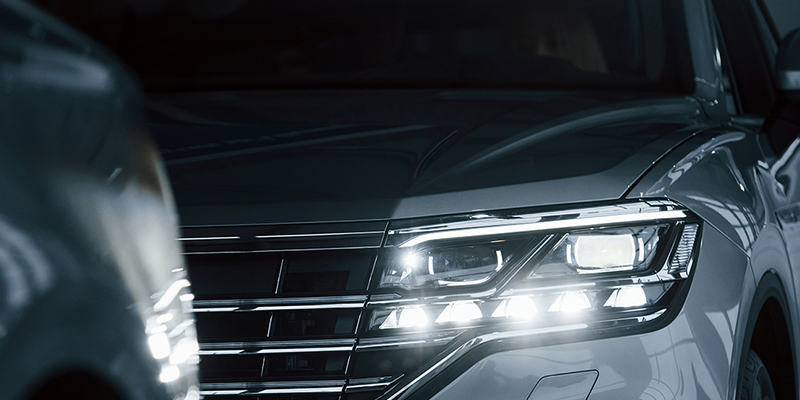Car Body Types Explained
Car Body Types Explained

With the amount of different models available in the car market, drivers have more choice than ever before when it comes to deciding which vehicle to choose as their next lease car. When choosing a car, it is important to understand what shape, style and type of car you are looking for and what you need. Will it be the sporty coupe or the spacious SUV that strikes your fancy?
However, it's not all just about the looks. The design of a car can make a huge impact on its functionality, from the numbers of passengers it can hold to the amount of space in the boot.
After all, different types of vehicles are made to serve different purposes and can make a big difference on your final decisions. This guide is here to help and explains everything you need to know about the different car body types available.
Superminis
Great for: City and Town driving and for the budget-conscious buyer.
Description: Also known as subcompacts, superminis are naturally small, nimble cars ideal for urban modern environments. Their compact size makes them easy to park, and typically very fuel-efficient. Despite their small stature, most can comfortably seat four adults, making them a practical choice for many.
Examples: Citroën C1, Fiat 500, Toyota Yaris.
Hatchbacks
Great for: Everyday versatility and practicality.
Description: Hatchbacks are one of the most popular and well-known car types, especially in the UK. They will typically include 5 doors, including the boot, for easier entry and exit for the back seat passengers. Hatchbacks can vary in size, from compact to family-sized, and are known for their economic benefits, making them a great all-rounder for a variety of needs.
Examples: Volkswagen Golf, Ford Fiesta, Renault Clio.
Saloons
Great for: Comfort and more passenger space.
Description: Saloon cars are characterised by their length and spaciousness. They tend to offer more space than hatchbacks and are seen as a more refined, luxury car. Saloon cars are ideal for those who prioritise comfort and style, often making them a favourite amongst business professionals.
Examples: BMW 3 Series, Audi A4, Mercedes-Benz C-Class.
SUVs (Sport Utility Vehicles)
Great for: Space, off-road capability, and a higher driving position.
Description: SUVs create the perfect blend of practicality from the family car with the ruggedness of an off-road vehicle. They typically have a higher driving position, offering better road visibility. Coming in various sizes, from compact to full-size. Many SUVs offer four-wheel drive, making them suitable for off road terrains.
Examples: Nissan Qashqai, Hyundai Tucson, Land Rover Discovery.
Coupés
Great for: Sportiness and style.
Description: Coupés are sleek, stylish two-door cars. They are typically lower and considered sportier than saloons, with a focus on performance. While coupés are typically designed with two doors, some models now offer five doors, known as “Gran Coupés,” blending the sporty look with added practicality.
Examples: Audi TT, Porsche 911, Mercedes-Benz E-Class Coupé.
Convertibles
Great for: Open-air driving and summer enjoyment.
Description: Convertibles feature a retractable roof, in some cars the entire roof will come off completely, some others offer systems to take down and put up the roof. Newer cars will now allow you to put the roof back up while driving, allowing drivers to enjoy an open-air experience at a moment’s notice. These cars are often associated with a sense of freedom and fun. However, the mechanisms involved in storing the roof often means the cabin and boot space gets sacrificed, making them less practical for daily use for some drivers. Did you know that convertibles also go by the name of roadsters, cabriolets and spyders?
Examples: Mazda MX-5, BMW Z4, Audi A5 Cabriolet.
Estates
Great for: Maximum boot space.
Description: Estate cars are essentially considered extended versions of hatchbacks, offering significant boot space. They are ideal for families or anyone with extra luggage. Estates are popular among those who frequently travel long distances or carry larger loads.
Examples: Volvo V60, Audi A6 Avant, BMW 3 Series Touring.
MPVs (Multi-Purpose Vehicles)
Great for: Transporting large groups or families.
Description: Known typically as people carriers, MPVs are designed to maximise interior space. They often include seating for seven passengers and come equipped with sliding doors for easy access. MPVs are perfect for large families or anyone needing to transport multiple passengers regularly.
Examples: Ford S-Max, Volkswagen Sharan, Volkswagen Multivan.
Pickup Trucks
Great for: Towing, hauling, and off-road use.
Description: Pickup trucks are versatile vehicles designed with utility and ruggedness in mind. They typically feature open cargo areas, also known as the "bed", in the back. Making them ideal for hauling large and or heavy loads. Modern pickups now combine the practicality of a work vehicle with the comfort of a family car.
Examples: Ford Ranger, Toyota Hilux, Volkswagen Amarok.
Choosing the right car type depends on your specific needs, lifestyle, and preferences. Whether you need to prioritise space, style, or practicality, there’s a car body type that will suit you. Understanding the pros and cons of each can help you make an informed decision, ensuring that your next car is a perfect fit for your life. Happy driving!
